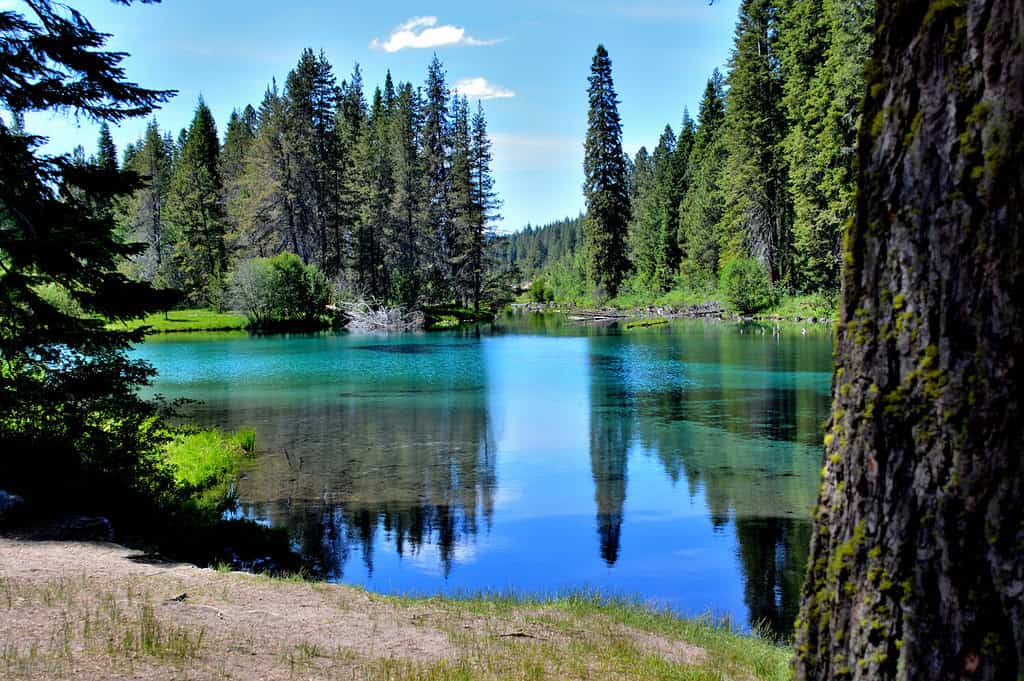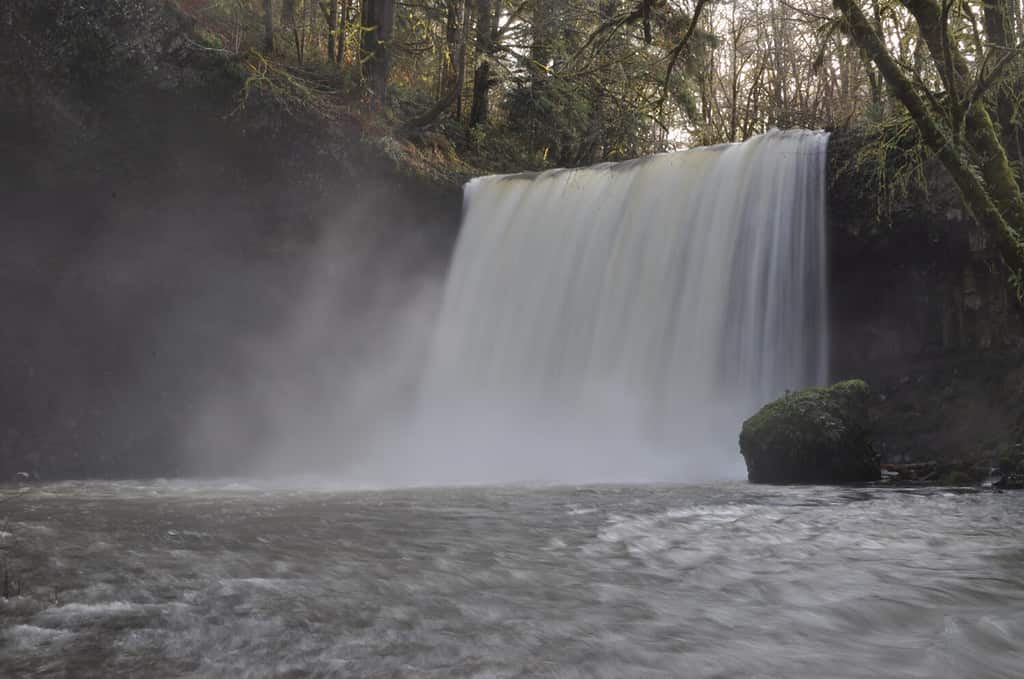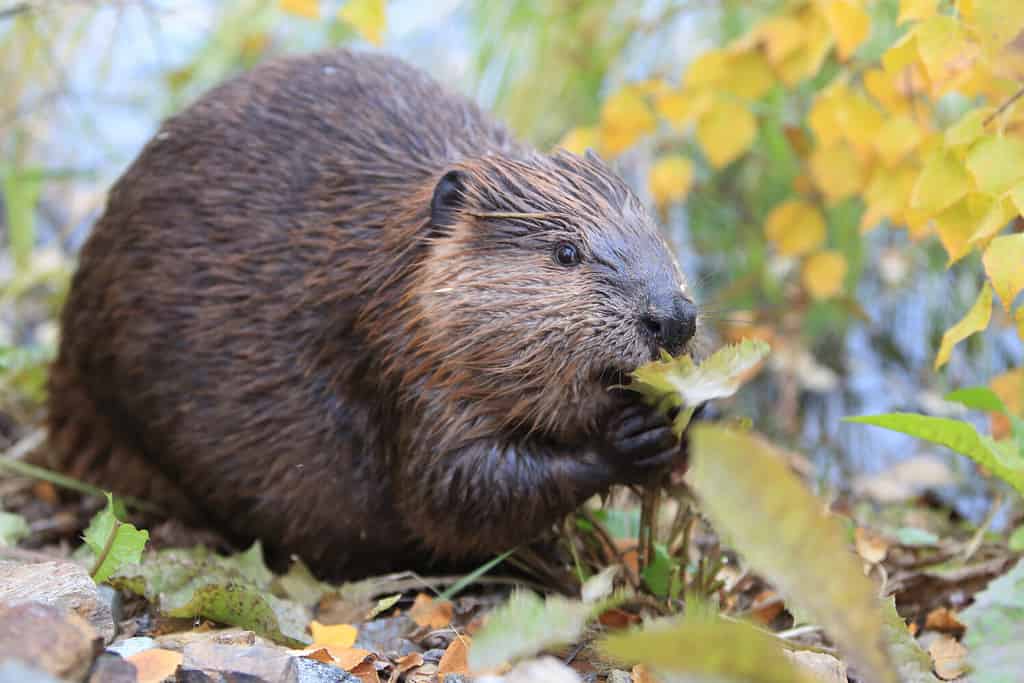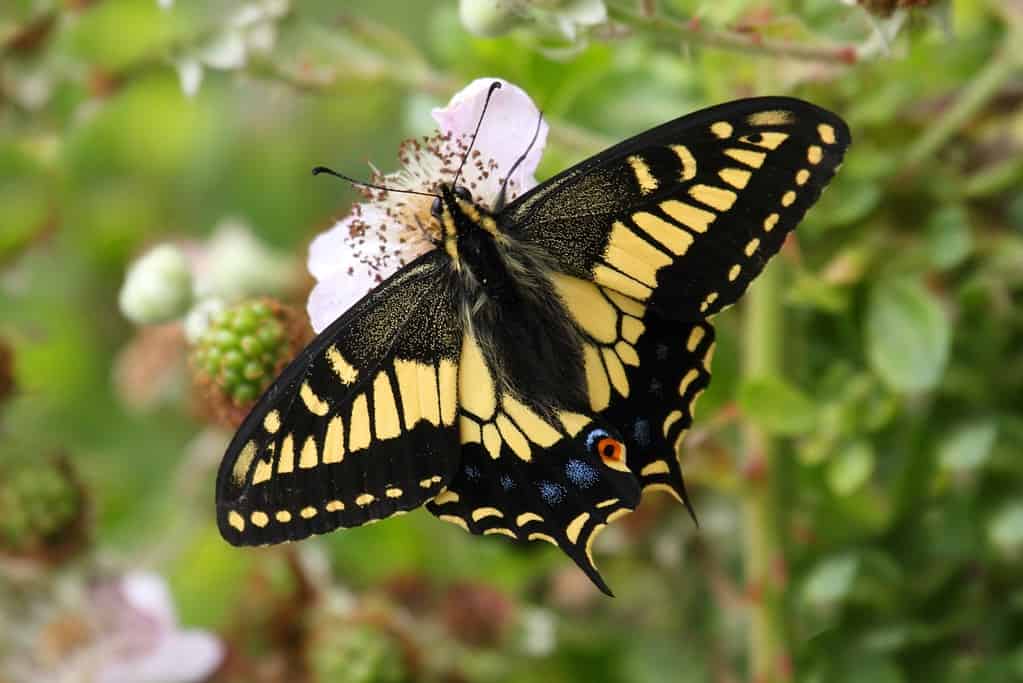Oregon is a state located in the Pacific Northwest, admired for its diverse landscapes which include forests, mountains, coastline, and high desert. Oregon features natural beauty, outdoor recreational opportunities, and progressive cultural and environmental values. Oregon’s abundant streams and rivers are home to a healthy population of American beavers (Castor canadensis). Once almost trapped to extinction, American beavers have clawed their way back, thanks to intentional conservation efforts. Continue reading to discover precisely why Oregon is called the Beaver State.

Oregon’s abundant streams and rivers are home to a healthy population of American beavers.
©David Crockett Photo/Shutterstock.com
History
Oregon is the Beaver State due to the historical significance of the beaver. Beavers played a crucial role in Oregon’s fur trade. You might even say that they gave their lives to the industry. The fur trade was the major economic driver of the early 19th century. Beaver fur was exceedingly valuable and in high demand, especially in Europe. The fur made hats and coats. The fur trade led to the exploration and settlement of the Oregon Territory by European and American fur trappers and traders. The beaver population was so abundant that it became a symbol of the region’s natural resources and economic potential.

Beavers played a crucial role in Oregon’s fur trade industry.
©Chase Dekker/Shutterstock.com
The Fur Trade
The first permanent European colony was a settlement at Fort George, the site of modern-day Astoria. The Pacific British Fur Company founded it in the early 19th century. The company wanted beaver pelts. The fur trade all but decimated the beaver population in Oregon. By the late 19th century, the beaver population was in such decline that in 1893 the state legislature took measures to ban trapping. By 1937, the beaver population had rebounded to the degree that regulated trapping was initiated. Measures have been introduced to once again ban beaver trapping within the state, thus far to no avail. Beaver and other fur-bearing rodents can still be legally trapped in Oregon. A valid Oregon furtaker license is required.
The connection between Oregon and the beaver is so embedded that, in 1969 the Oregon State Legislature officially designated the beaver as the state animal and adopted the nickname The Beaver State. This nickname not only reflects the historical importance of the beaver in Oregon’s early development but also celebrates the state’s natural beauty and wildlife.

Oregon officially adopted the nickname The Beaver State in 1969. Pictured here is Beaver Falls.
©Timothy Larkins/Shutterstock.com
The American Beaver
The American beaver (Castor canadensis) is a semiaquatic rodent native to North America. It has dense, waterproof fur, webbed hind feet, and an iconic flat tail. Bevers are relatively large rodents. On average, they measure between 2.5 and 3 feet (76 and 91 cm) long. Their flat, paddle-like tails can add an additional 10 to 18 inches (25 to 46 cm) to their overall length. Adult American beavers can weigh anywhere from 35 to 70 pounds (16 to 32 km). The beaver also possesses dam-building skills. Beavers modify their environments by constructing complex dams and lodges using sticks, mud, and rocks. Herbivorous by nature, they primarily feed on the bark, leaves, and twigs of woody plants. A keystone species, beavers significantly affect landscapes, shaping habitats that benefit other wildlife and enhance water quality.

Beavers primarily feed on the bark, leaves, and twigs of woody plants.
©Frank Fichtmueller/Shutterstock.com
Other Official State Animals
Oregon has also officially recognized other animals to represent the state’s natural beauty. This makes the beaver the official state rodent or mammal. The official state bird of Oregon is the western meadowlark (Sturnella neglecta). The western meadowlark has been the official state bird of Oregon since 1927. Known for its melodious song and vibrant appearance, the western meadowlark is a common sight in the grasslands and agricultural areas of the state. Chinook salmon (Oncorhynchus tshawytscha) is Oregon’s official state fish. It became the state fish of Oregon in 1961. These iconic fish are an integral part of the state’s ecosystem, culture, and economy.
The official Oregon state insect is the Oregon swallowtail butterfly (Papilio machaon oregonius). The Oregon swallowtail butterfly became the state insect in 1979. It is a distinctive and rare species found in the region.

The official Oregon state insect is the Oregon swallowtail butterfly.
©Steve Byland/Shutterstock.com
Other Official State Symbols
The official state flower is the Oregon Grape (Mahonia aquifolium). The state chose the Oregon grape as the official state flower in 1899. It is a native plant with yellow flowers and blue-purple berries.
The Douglas fir (Pseudotsuga menziesii) became the state tree in 1936. This evergreen conifer is one of the most widespread and commercially important trees in Oregon.
The official state fungus is the Pacific golden chanterelle (Cantharellus formosus). The Pacific golden chanterelle is the state mushroom, reflecting the state’s rich fungal diversity. The hazelnut (Corylus avellana), or the filbert, is the official state nut. Oregon is a leading producer of hazelnuts in the United States.
Although it’s not an animal or plant, the official state song, Oregon, My Oregon is a symbol of Oregon’s natural beauty and scenery. The tune became the state song in 1927.
The photo featured at the top of this post is © Vlad G/Shutterstock.com
Thank you for reading! Have some feedback for us? Contact the AZ Animals editorial team.







